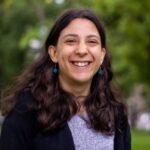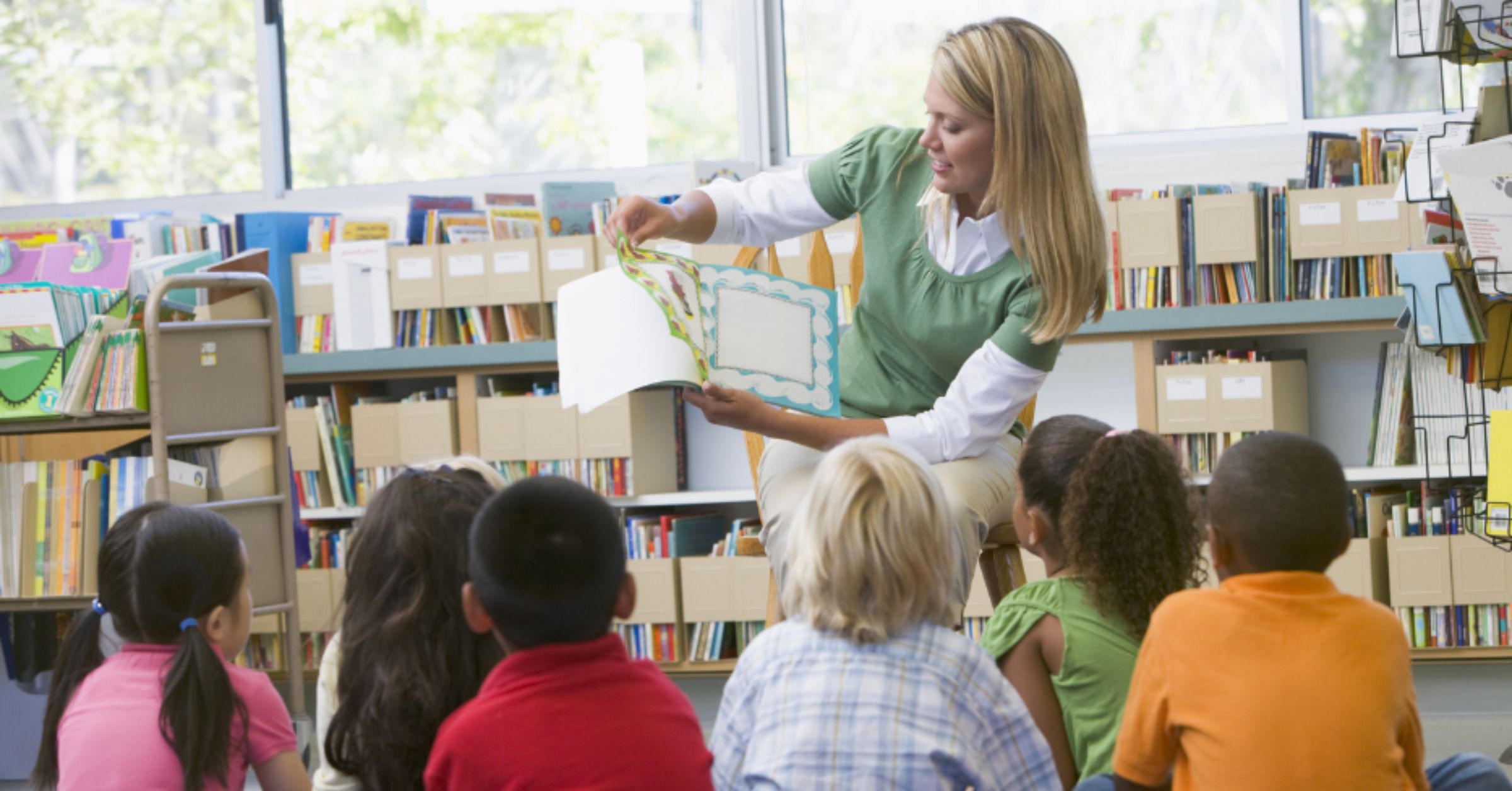CYDA Inclusion Coordinator Laura Pettenuzzo discusses the importance of including genuine disability representation in books at school in this article for Education Australia.
Disabled people constitute at least 18% of the population, and young people are a significant proportion of those, with 43% of NDIS participants aged 14 and under as of June 2023. Yet disabled young people face a variety of barriers in interpersonal relationships, employment and education. Many of these barriers are rooted in community attitudes, which are solidified during the primary school years.
Disability representation in books and educational resources can play a vital role in shaping positive attitudes towards disability for students during those formative years. It can even create new perspectives among teachers. Notably, it is crucial that disability representation in textbooks or novels is delivered through a strengths-based and disability pride lens. The content must be created by someone with lived experience and/or a solid understanding of appropriate portrayal of disability, as inaccurate portrayals of disability in school textbooks, according to one Hungarian study, can negatively influence students’ understanding of disability. Conversely, sensitive and accurate portrayals of disability can benefit disabled students, their nondisabled peers, and their teachers and families.
This article will demonstrate those benefits, using three middle-grade novels: The Amazing Edie Eckhart by Rosie Jones, The Bravest Word by Kate Foster, and Roll With It by Jamie Sumner.
The power of seeing yourself on the page
School can be a challenging place for disabled young people. Classrooms and curriculums are not designed to meet individual access needs. Disabled students might be criticized for not being able to keep up – physically or cognitively – with other students and may feel the need to hide or minimize their disability for the sake of those around them. In mainstream schools, they might be the only disabled student, and may feel self-conscious and lonely. Researchers have found young people with cerebral palsy, for example, are more likely than their nondisabled peers to exhibit various symptoms of mental illness. Several factors contribute to mental health challenges among young people with CP, but chief among them are a sense of isolation and alienation from peers.
The Amazing Edie Eckhart series by Rosie Jones illustrates that an alternative, inclusive education experience is possible. Rosie Jones is a British comedian with CP, and her novels are based on her own experiences. Jones’ protagonist, Edie, exemplifies disability pride. She confidently explains her disability to her peers and asks for support when she needs it. Seeing a character like Rosie in the pages of a book shows disabled students that it’s possible to speak up for what they need and to have those needs met. Edie is also – like Jones – attracted to women, an important element of the novel and of intersectional representation. Edie is – like all disabled people – multidimensional, complex, and much more than the cumulative impacts of her disability.
Jones also shows her readers that disabled young people might have internalised ableism. In other words, they might believe or assume they are less than nondisabled people or can’t do certain things because of their disability. Jones highlights the impacts of internalised ableism when a wheelchair user and fellow student tells Edie that the two of them can’t play a drama game, “with me in this chair and you walking like that.” Edie’s reaction – playing the game in her own way, with a teacher – is Jones’ way of rejecting those ableist ideas and celebrating Edie as the expert of her own capacity. But Edie could only react that way because she understood her disability, and her teacher understood her.
On the other hand, Alex, the protagonist of Kate Foster’s The Bravest Word didn’t have that level of awareness or support. Consequently, he thought he was a failure until he received psychoeducation. As Alex and his mum reflected, “it’s okay to stop sometimes and allow ourselves to be sad or tired or confused. I know that now.” Jones’ and Foster’s novels have the potential to expand the perspectives of disabled students and their nondisabled peers.
The benefits for nondisabled students
Nondisabled students may not have met a disabled person before coming to school. They may have never been exposed to disability whatsoever. The school environment, then, presents an opportunity to introduce them to disability in a way that fosters empathy and understanding of it as a natural part of human diversity. When students see disability in their worksheets, textbooks, or library books, they absorb the notion that disability is not something foreign or unfathomable. They will incorporate it into their understanding of the world. Increased disability awareness also leads to decreased bullying of disabled students, and likely more positive attitudes towards disabled people in the community.
Books can introduce students to ideas around disability and quash common misconceptions. For example, not all disability is visible, and disability is far more common than students might imagine. The Bravest Word depicts psychosocial disability (in this case, depression) among 11-year-old Alex. Initially, Alex and his friends harboured misconceptions about depression, noting near the book’s conclusion that “depression and anxiety are way more common than [we] realized, and not just in adults, but in kids and animals too.”
An additional consequence of a lack of disability awareness is that students might not know how to interact with their disabled peers. They may worry about doing or saying the wrong thing and opt for not saying or doing anything at all. Books depicting healthy friendships between disabled and nondisabled students are a means of addressing this by modelling appropriate behaviour for nondisabled students. For example, Rosie Jones’ above-mentioned Edie Eckhart series portrays Edie’s two best friends with different approaches to supporting her. Oscar “wants to help [her] all of the time, but Flora likes [her] to do things for [herself].” In this way, Jones suggests that it is possible – indeed, vital – to support disabled peers without coddling them, to simultaneously understand they can both need support sometimes and are independent and capable young people. This idea is an important one for teachers and parents too.
Teaching the teacher
Teachers can learn just as much as their students through the incorporation of disability into learning resources. A teacher’s attitude can make or break a student’s school experience and their educational engagement. A teacher in Rosie Jones’ Edie Eckhart series tells Edie she can’t have a speaking role in the school play because, “with the speed of your speech, it would take too long.” Rather than accommodating the speed of Edie’s speech, the teacher discriminates against and excludes her.
Compare this with the character of Hutch in Jamie Sumner’s Roll With It, a middle-grade novel about a young wheelchair user called Ellie. The novel is based on Sumner’s experiences with her son, who has cerebral palsy. Hutch is Ellie’s physical education teacher, and she’s impressed that, “unlike in every other class, [he] has a plan for me from the moment I wheel onto the wax floors.” Hutch prioritized including Ellie by devising games in which she could partake, and teachers of all subjects can and should do the same for disabled students. Roll With It, and similar novels, can also help teachers understand and accommodate various access needs.
Even if there are no disabled students in the classroom (of which teachers are aware), teachers should incorporate disability representation into educational resources. Doing so will enrich the educational experience for all students and prompt questions and conversations with parents.
Shaping attitudes at home
Parents are a secondary beneficiary of disability representation in middle-grade novels and school resources. Even the most well-intentioned parents might inadvertently perpetuate ableism or stigma. In The Bravest Word, Kate Foster juxtaposes the attitudes of Alex’s mum and dad to demonstrate the potential impacts of different approaches to psychosocial disability. Alex’s mum initially insists on a motto of “mind over matter,” leading him to feel as though his feelings are a personal failing. Alex’s dad, on the other hand, recognises and validates his emotions, creating a sense of trust and openness between them. Some young people, like Alex, might lack the language to articulate how they’re feeling or what they need. Reading books with affirming representation can support parents and teachers to start conversations around disability, and might also give students the language and confidence to start those conversations themselves.
The middle-grade books explored in this article are just three of many great examples of disability representation. Children and Young People with Disability Australia (CYDA) have more information about the role of disability representation in books and a longer list of books for your classroom or library on their website. Every person in and around the education system can transform attitudes and awareness of disability, and it’s not difficult or time-consuming. Read these books and others like them. Stock them in your school libraries and classrooms. Talk to your students about disability and listen to your disabled students. Schools and students will be better off for it.
This article was originally published in the September 2024 edition of Education Australia. Check out the full issue here.

About the author:
Laura Pettenuzzo (she/her) is a writer, disability advocate, and CYDA’s Inclusion Coordinator, living on Wurundjeri country. Her lived experience of physical and psychosocial disability informs all her work. Her writing explores disability and queer rights, including the value of accurate media representation, and has appeared in places like Griffith Review, Meanjin, Kill Your Darlings, ABC, SBS, The Age and The Guardian.


